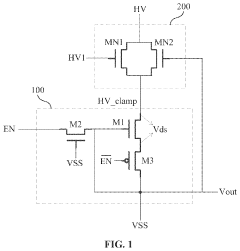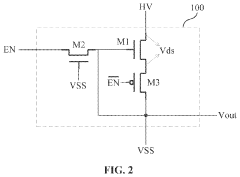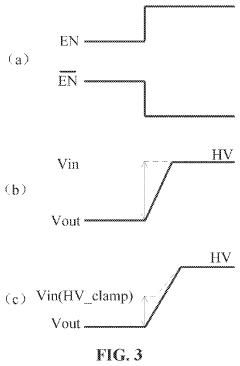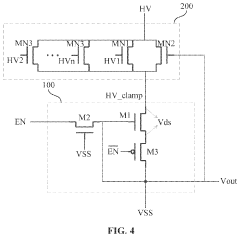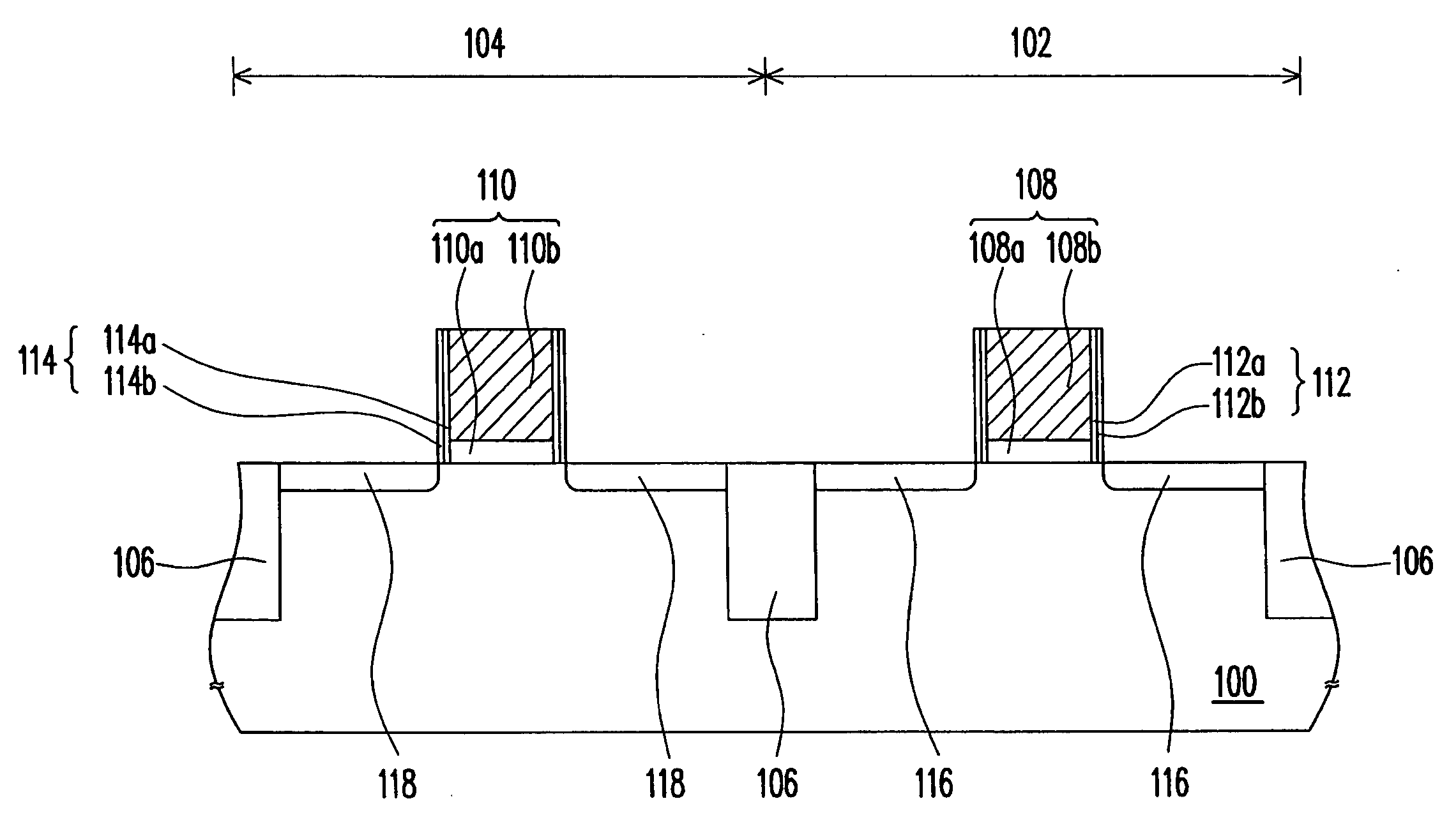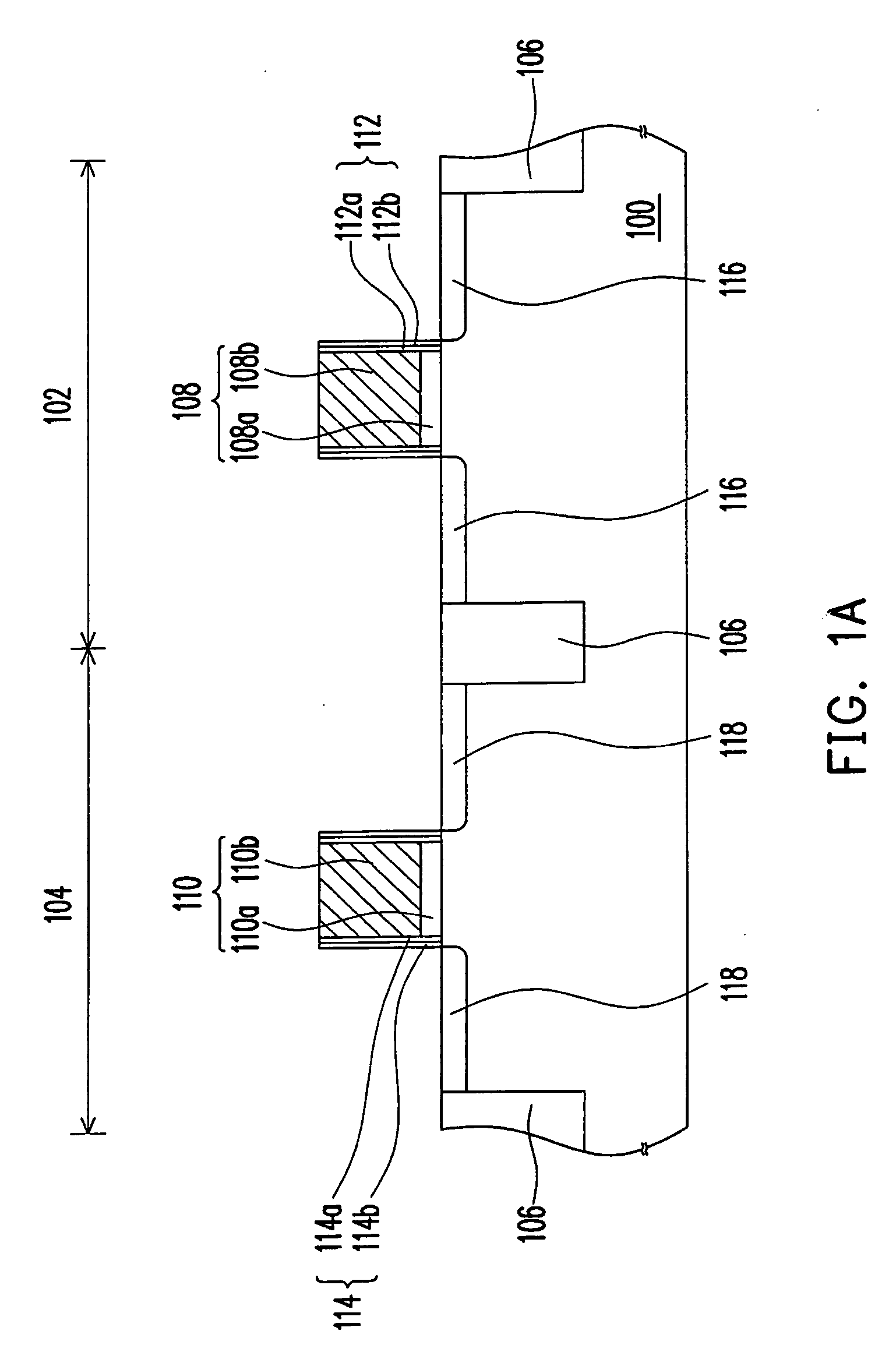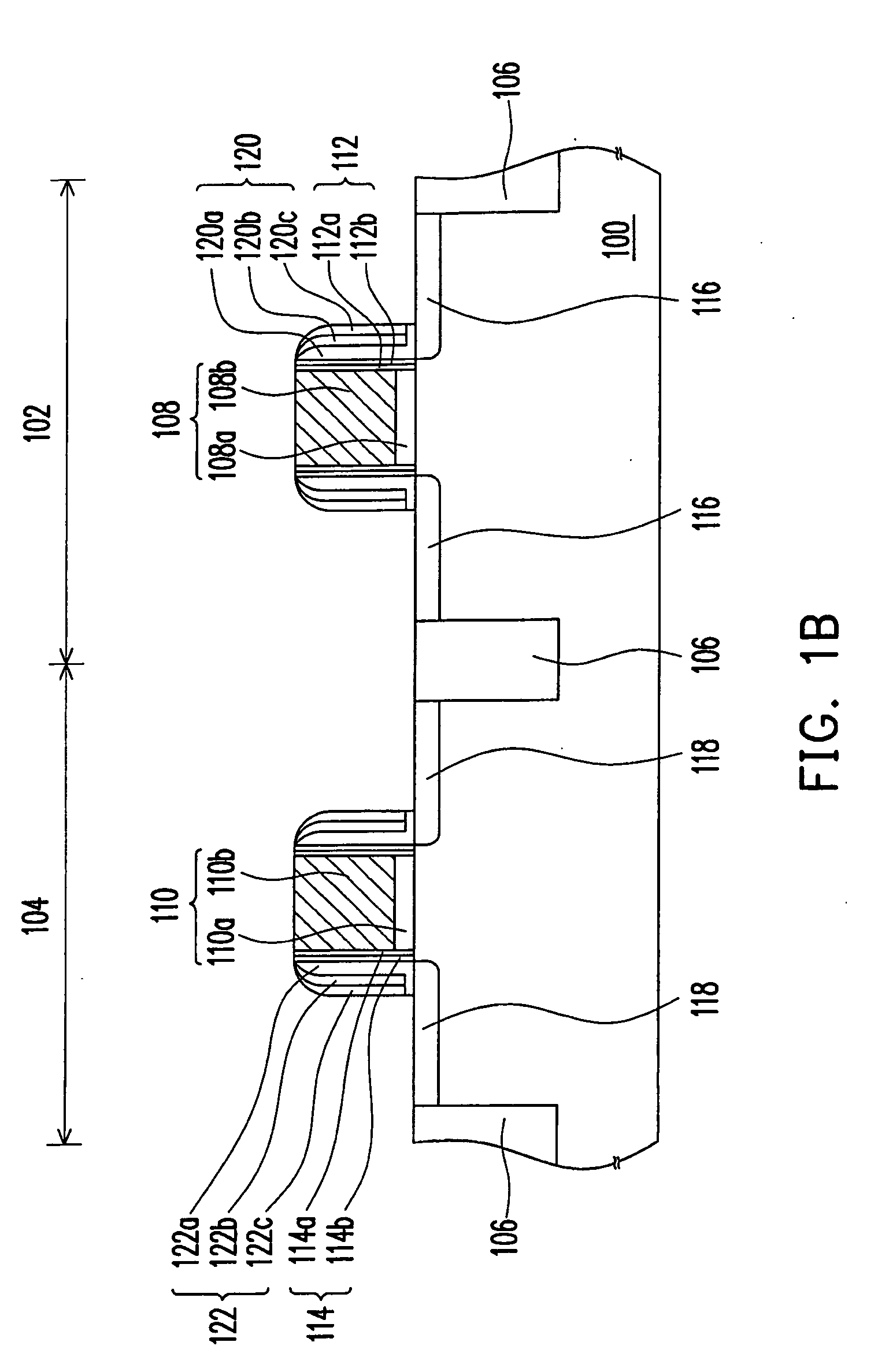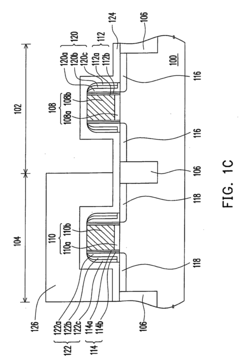How CMOS Battery Supports Streamlined Interactive Technology Systems?
JUL 22, 20259 MIN READ
Generate Your Research Report Instantly with AI Agent
Patsnap Eureka helps you evaluate technical feasibility & market potential.
CMOS Battery Evolution
The evolution of CMOS battery technology has played a crucial role in supporting streamlined interactive technology systems. Initially introduced in the 1980s, CMOS (Complementary Metal-Oxide-Semiconductor) batteries were designed to maintain system settings and real-time clock information when a computer was powered off. Over time, their function has expanded to support a wide range of interactive technologies.
In the early stages, CMOS batteries were primarily used in personal computers to store BIOS settings. As technology advanced, these batteries became integral to maintaining system configurations in various devices, including servers, networking equipment, and embedded systems. The reliability and longevity of CMOS batteries improved significantly, with modern versions lasting up to 10 years or more.
The miniaturization of electronic components led to the development of smaller, more efficient CMOS batteries. This trend allowed for the integration of CMOS technology into portable devices, supporting the growth of mobile computing and smartphones. The reduced power consumption of these batteries contributed to extended battery life in portable devices, enhancing user experience in interactive systems.
As interactive technology systems became more complex, CMOS batteries evolved to support additional functions. They began to play a crucial role in maintaining system security settings, encryption keys, and user preferences. This expansion of functionality made CMOS batteries essential for ensuring seamless user experiences across multiple devices and platforms.
The advent of Internet of Things (IoT) devices further pushed the evolution of CMOS battery technology. These batteries now support low-power, always-on features in smart home devices, wearables, and industrial sensors. Their ability to maintain critical information during power outages or battery changes has become invaluable in ensuring the continuity of interactive systems.
Recent advancements in CMOS battery technology have focused on environmental sustainability and improved performance. Manufacturers have developed rechargeable CMOS batteries and explored alternative power sources, such as supercapacitors, to reduce electronic waste. These innovations aim to extend the lifespan of interactive technology systems and minimize maintenance requirements.
The integration of CMOS batteries with energy harvesting technologies represents the latest frontier in their evolution. This combination allows interactive systems to operate autonomously for extended periods, drawing power from ambient sources like light, heat, or motion. Such advancements are particularly significant for remote sensing applications and wearable technologies, where continuous operation without frequent battery replacements is crucial.
In the early stages, CMOS batteries were primarily used in personal computers to store BIOS settings. As technology advanced, these batteries became integral to maintaining system configurations in various devices, including servers, networking equipment, and embedded systems. The reliability and longevity of CMOS batteries improved significantly, with modern versions lasting up to 10 years or more.
The miniaturization of electronic components led to the development of smaller, more efficient CMOS batteries. This trend allowed for the integration of CMOS technology into portable devices, supporting the growth of mobile computing and smartphones. The reduced power consumption of these batteries contributed to extended battery life in portable devices, enhancing user experience in interactive systems.
As interactive technology systems became more complex, CMOS batteries evolved to support additional functions. They began to play a crucial role in maintaining system security settings, encryption keys, and user preferences. This expansion of functionality made CMOS batteries essential for ensuring seamless user experiences across multiple devices and platforms.
The advent of Internet of Things (IoT) devices further pushed the evolution of CMOS battery technology. These batteries now support low-power, always-on features in smart home devices, wearables, and industrial sensors. Their ability to maintain critical information during power outages or battery changes has become invaluable in ensuring the continuity of interactive systems.
Recent advancements in CMOS battery technology have focused on environmental sustainability and improved performance. Manufacturers have developed rechargeable CMOS batteries and explored alternative power sources, such as supercapacitors, to reduce electronic waste. These innovations aim to extend the lifespan of interactive technology systems and minimize maintenance requirements.
The integration of CMOS batteries with energy harvesting technologies represents the latest frontier in their evolution. This combination allows interactive systems to operate autonomously for extended periods, drawing power from ambient sources like light, heat, or motion. Such advancements are particularly significant for remote sensing applications and wearable technologies, where continuous operation without frequent battery replacements is crucial.
Market Demand Analysis
The market demand for CMOS battery-supported streamlined interactive technology systems has been steadily growing, driven by the increasing need for reliable and efficient computing devices across various sectors. These systems, which rely on CMOS batteries to maintain critical system settings and real-time clock functions, have become integral to modern computing infrastructure.
In the enterprise sector, there is a significant demand for CMOS battery-supported systems in servers, workstations, and data centers. These environments require uninterrupted operation and consistent performance, which CMOS batteries help ensure by maintaining system configurations even during power outages or system shutdowns. The global server market, a key indicator of this demand, has been expanding at a compound annual growth rate (CAGR) of around 7% in recent years.
The consumer electronics market also shows strong demand for CMOS battery-supported systems, particularly in laptops, desktops, and gaming consoles. As remote work and digital entertainment continue to grow, consumers increasingly rely on devices that offer seamless user experiences and minimal downtime. The global PC market, including laptops and desktops, has seen renewed growth, with shipments increasing by double-digit percentages in recent quarters.
In the industrial sector, CMOS battery-supported systems are crucial for maintaining settings in programmable logic controllers (PLCs), industrial computers, and automation equipment. The industrial IoT (IIoT) market, which heavily relies on such systems, is projected to grow at a CAGR of over 20% in the coming years, indicating a robust demand for reliable, always-on computing solutions.
The automotive industry represents another significant market for CMOS battery-supported systems. Modern vehicles incorporate numerous electronic control units (ECUs) that depend on CMOS batteries to retain critical settings and calibration data. With the rise of electric and autonomous vehicles, the demand for sophisticated onboard computing systems is expected to surge, further driving the need for CMOS battery-supported technologies.
Healthcare is an emerging market for these systems, with medical devices and hospital equipment increasingly relying on consistent, uninterrupted operation. The global medical devices market, which includes many CMOS battery-supported systems, is projected to grow at a CAGR of around 5% over the next few years.
The trend towards edge computing and distributed systems is also fueling demand for CMOS battery-supported technologies. As computing power moves closer to data sources, the need for reliable, low-maintenance systems that can operate in diverse environments is increasing. This trend is expected to drive further growth in the market for CMOS battery-supported streamlined interactive technology systems across various industries and applications.
In the enterprise sector, there is a significant demand for CMOS battery-supported systems in servers, workstations, and data centers. These environments require uninterrupted operation and consistent performance, which CMOS batteries help ensure by maintaining system configurations even during power outages or system shutdowns. The global server market, a key indicator of this demand, has been expanding at a compound annual growth rate (CAGR) of around 7% in recent years.
The consumer electronics market also shows strong demand for CMOS battery-supported systems, particularly in laptops, desktops, and gaming consoles. As remote work and digital entertainment continue to grow, consumers increasingly rely on devices that offer seamless user experiences and minimal downtime. The global PC market, including laptops and desktops, has seen renewed growth, with shipments increasing by double-digit percentages in recent quarters.
In the industrial sector, CMOS battery-supported systems are crucial for maintaining settings in programmable logic controllers (PLCs), industrial computers, and automation equipment. The industrial IoT (IIoT) market, which heavily relies on such systems, is projected to grow at a CAGR of over 20% in the coming years, indicating a robust demand for reliable, always-on computing solutions.
The automotive industry represents another significant market for CMOS battery-supported systems. Modern vehicles incorporate numerous electronic control units (ECUs) that depend on CMOS batteries to retain critical settings and calibration data. With the rise of electric and autonomous vehicles, the demand for sophisticated onboard computing systems is expected to surge, further driving the need for CMOS battery-supported technologies.
Healthcare is an emerging market for these systems, with medical devices and hospital equipment increasingly relying on consistent, uninterrupted operation. The global medical devices market, which includes many CMOS battery-supported systems, is projected to grow at a CAGR of around 5% over the next few years.
The trend towards edge computing and distributed systems is also fueling demand for CMOS battery-supported technologies. As computing power moves closer to data sources, the need for reliable, low-maintenance systems that can operate in diverse environments is increasing. This trend is expected to drive further growth in the market for CMOS battery-supported streamlined interactive technology systems across various industries and applications.
Technical Challenges
The integration of CMOS battery technology into streamlined interactive technology systems presents several significant technical challenges. One of the primary obstacles is the limited power capacity of CMOS batteries, which constrains their ability to support extended periods of operation for complex interactive systems. This limitation necessitates frequent battery replacements or recharges, potentially disrupting the seamless user experience these systems aim to provide.
Another critical challenge lies in the miniaturization of CMOS batteries while maintaining or improving their power output. As interactive technology systems become increasingly compact and portable, the demand for smaller yet more efficient power sources grows. Achieving this balance between size reduction and power enhancement requires innovative materials science and engineering solutions.
The issue of power management and optimization also poses a significant hurdle. Interactive systems often have varying power requirements depending on their operational state and user interactions. Developing sophisticated power management algorithms that can efficiently allocate and conserve battery power while ensuring responsive system performance is a complex task that demands advanced software and hardware integration.
Temperature sensitivity is another technical challenge facing CMOS batteries in interactive systems. These batteries can experience performance degradation or even failure when exposed to extreme temperatures, which is particularly problematic for devices designed for outdoor use or harsh environments. Addressing this issue requires the development of more robust battery chemistries and improved thermal management systems.
The environmental impact and disposal of CMOS batteries present additional challenges. As interactive technology systems become more widespread, the volume of discarded batteries increases, raising concerns about electronic waste and potential environmental contamination. Developing eco-friendly battery technologies and establishing efficient recycling processes are crucial steps in mitigating these issues.
Compatibility and standardization across different interactive technology platforms also pose significant challenges. The diverse range of devices and systems in the market often utilize varying battery specifications, complicating the development of universal power solutions. Establishing industry-wide standards for CMOS batteries in interactive systems could streamline production and improve interoperability but requires extensive collaboration among manufacturers and regulatory bodies.
Lastly, the challenge of extending battery lifespan while maintaining performance consistency over time remains a critical area of focus. As interactive systems evolve to include more features and capabilities, the demand for long-lasting, reliable power sources intensifies. Addressing this challenge requires ongoing research into advanced battery chemistries, charge cycle optimization, and predictive maintenance technologies to ensure consistent performance throughout the battery's operational life.
Another critical challenge lies in the miniaturization of CMOS batteries while maintaining or improving their power output. As interactive technology systems become increasingly compact and portable, the demand for smaller yet more efficient power sources grows. Achieving this balance between size reduction and power enhancement requires innovative materials science and engineering solutions.
The issue of power management and optimization also poses a significant hurdle. Interactive systems often have varying power requirements depending on their operational state and user interactions. Developing sophisticated power management algorithms that can efficiently allocate and conserve battery power while ensuring responsive system performance is a complex task that demands advanced software and hardware integration.
Temperature sensitivity is another technical challenge facing CMOS batteries in interactive systems. These batteries can experience performance degradation or even failure when exposed to extreme temperatures, which is particularly problematic for devices designed for outdoor use or harsh environments. Addressing this issue requires the development of more robust battery chemistries and improved thermal management systems.
The environmental impact and disposal of CMOS batteries present additional challenges. As interactive technology systems become more widespread, the volume of discarded batteries increases, raising concerns about electronic waste and potential environmental contamination. Developing eco-friendly battery technologies and establishing efficient recycling processes are crucial steps in mitigating these issues.
Compatibility and standardization across different interactive technology platforms also pose significant challenges. The diverse range of devices and systems in the market often utilize varying battery specifications, complicating the development of universal power solutions. Establishing industry-wide standards for CMOS batteries in interactive systems could streamline production and improve interoperability but requires extensive collaboration among manufacturers and regulatory bodies.
Lastly, the challenge of extending battery lifespan while maintaining performance consistency over time remains a critical area of focus. As interactive systems evolve to include more features and capabilities, the demand for long-lasting, reliable power sources intensifies. Addressing this challenge requires ongoing research into advanced battery chemistries, charge cycle optimization, and predictive maintenance technologies to ensure consistent performance throughout the battery's operational life.
Current CMOS Solutions
01 CMOS battery backup systems
CMOS battery backup systems are designed to maintain critical system information and settings when the main power is off. These systems typically use small, long-lasting batteries to power the CMOS memory, which stores important configuration data such as time, date, and hardware settings. The backup system ensures that this information is retained even when the computer is unplugged or the main battery is removed.- CMOS battery backup systems: CMOS battery backup systems are designed to maintain system settings and real-time clock information when the main power is off. These systems typically use a small battery, often a lithium coin cell, to provide continuous power to the CMOS memory and real-time clock circuitry. This ensures that important system configuration data and time/date information are preserved even when the computer is unplugged or powered down.
- Battery monitoring and management: Advanced CMOS battery support systems incorporate monitoring and management features. These may include voltage level detection, battery health assessment, and low battery warnings. Such systems can alert users when the CMOS battery is nearing the end of its life, preventing unexpected data loss or system configuration issues. Some implementations may also include automatic switchover to backup power sources or the ability to hot-swap batteries without losing CMOS data.
- Integration with power management systems: Modern CMOS battery support is often integrated with broader power management systems in electronic devices. This integration allows for more efficient power usage, extended battery life, and improved overall system reliability. Advanced power management techniques may include selective powering of CMOS circuits, intelligent charging systems, and coordination with sleep or hibernation modes to minimize battery drain.
- CMOS battery holder designs: Innovative designs for CMOS battery holders focus on improving accessibility, reliability, and ease of replacement. These designs may feature quick-release mechanisms, tool-less access, or integration with other system components for space efficiency. Some holders are designed to provide better protection against environmental factors or to improve electrical contact reliability, ensuring consistent power supply to the CMOS circuitry.
- Alternative power sources for CMOS backup: Research into alternative power sources for CMOS backup aims to overcome limitations of traditional battery systems. These alternatives may include supercapacitors, energy harvesting technologies, or long-life rechargeable solutions. The goal is to provide more sustainable, longer-lasting, or maintenance-free options for maintaining CMOS data and real-time clock functions, potentially eliminating the need for periodic battery replacements in electronic devices.
02 CMOS battery monitoring and management
Advanced CMOS battery support includes monitoring and management features. These systems can detect low battery conditions, estimate remaining battery life, and provide alerts to users or system administrators. Some implementations include automatic switchover to backup power sources or graceful shutdown procedures to prevent data loss when the CMOS battery is critically low.Expand Specific Solutions03 CMOS battery integration in mobile devices
Mobile devices, such as smartphones and tablets, require specialized CMOS battery support due to their compact size and power constraints. These implementations often integrate the CMOS battery with other power management systems, using innovative designs to maximize battery life and minimize space requirements. Some solutions involve using the main device battery to trickle-charge the CMOS battery or employing alternative energy storage technologies.Expand Specific Solutions04 CMOS battery support in server and enterprise systems
Server and enterprise systems require robust CMOS battery support to ensure continuous operation and data integrity. These implementations often include redundant battery systems, hot-swappable batteries, and advanced monitoring capabilities. Some designs incorporate the CMOS battery into the overall power management architecture of the server, allowing for centralized control and maintenance.Expand Specific Solutions05 CMOS battery alternatives and energy harvesting
Innovative approaches to CMOS battery support include the development of alternatives to traditional battery technologies. These may involve the use of supercapacitors, solid-state batteries, or energy harvesting techniques. Some designs aim to eliminate the need for a separate CMOS battery altogether by utilizing residual power from the main system or employing non-volatile memory technologies to store configuration data.Expand Specific Solutions
Key Industry Players
The CMOS battery technology market is in a mature stage, with a stable global market size estimated in the hundreds of millions of dollars annually. The technology is well-established and widely adopted across various interactive technology systems. Key players like Apple, IBM, and Dell have integrated CMOS batteries into their product lines, leveraging the technology to support system configurations and real-time clock functions. Taiwan Semiconductor Manufacturing Co. and SK hynix play crucial roles in manufacturing semiconductor components related to CMOS technology. The market is characterized by incremental improvements rather than disruptive innovations, with companies focusing on enhancing battery life, reducing power consumption, and miniaturization to meet the demands of increasingly compact and energy-efficient devices.
Apple, Inc.
Technical Solution: Apple's approach to CMOS battery technology in their interactive systems focuses on miniaturization and energy efficiency. They have developed a custom CMOS battery solution that integrates seamlessly with their System on Chip (SoC) designs. This solution utilizes advanced lithium-ion technology, allowing for a smaller form factor while maintaining long-term reliability. Apple's CMOS battery system incorporates intelligent power management algorithms that optimize power consumption based on usage patterns, extending the overall lifespan of the battery[1]. Additionally, they have implemented a secure enclave within their chips that uses the CMOS battery to maintain critical system information and security keys, even when the main battery is depleted[3].
Strengths: Highly integrated solution, optimized for Apple's ecosystem, excellent power efficiency. Weaknesses: Proprietary nature limits compatibility with non-Apple systems, potentially higher replacement costs.
International Business Machines Corp.
Technical Solution: IBM's approach to CMOS battery support in interactive technology systems leverages their expertise in enterprise-level solutions. They have developed a robust CMOS battery management system that focuses on reliability and longevity for server and mainframe environments. IBM's solution incorporates redundant CMOS battery arrays to ensure uninterrupted operation of critical systems. Their technology includes advanced monitoring capabilities that predict battery failure and allow for hot-swapping of CMOS batteries without system downtime[2]. IBM has also implemented machine learning algorithms to optimize CMOS battery usage based on workload patterns, significantly extending battery life in high-performance computing environments[4].
Strengths: Highly reliable for enterprise systems, predictive maintenance capabilities, suitable for 24/7 operation. Weaknesses: May be over-engineered for consumer applications, potentially higher cost.
Core CMOS Innovations
Complementary metal oxide semiconductor circuit of memory device
PatentActiveUS20230139130A1
Innovation
- Incorporating an auxiliary clamping circuit between the input high-voltage and the source/drain terminals of MOS transistors to clamp the voltage during the rising phase of the output voltage, reducing the drain-source voltage and mitigating the hot carrier injection effect while maintaining high-voltage resistance.
Complementary metal-oxide-semiconductor device
PatentInactiveUS20080116525A1
Innovation
- A method involving the use of a carbon-containing oxynitride passivation layer with a low etching rate, formed through low-pressure chemical-vapor deposition, is employed to prevent the removal of the passivation layer during photoresist removal and trench formation, and a thermal process is applied to densify the passivation layer, reducing the etching rate and avoiding poly bump generation.
Energy Efficiency
Energy efficiency is a critical aspect of CMOS battery technology in supporting streamlined interactive technology systems. The CMOS battery plays a crucial role in maintaining system settings and real-time clock functionality, even when the main power source is disconnected. This continuous operation requires careful consideration of energy consumption to ensure long-lasting performance and minimal environmental impact.
CMOS batteries are designed to operate with extremely low power consumption, typically drawing only a few microamperes of current. This low power draw is achieved through the use of advanced low-leakage CMOS technology, which minimizes standby current and reduces overall energy consumption. The energy efficiency of CMOS batteries is further enhanced by their ability to maintain charge for extended periods, often lasting several years without replacement.
In the context of streamlined interactive technology systems, the energy efficiency of CMOS batteries contributes to the overall power management strategy. By providing a reliable, low-power solution for maintaining critical system information, CMOS batteries allow the main system components to enter deep sleep or power-off states when not in use. This capability significantly reduces the overall energy consumption of the device, extending battery life in portable systems and reducing power costs in stationary applications.
The energy efficiency of CMOS batteries also aligns with the growing emphasis on sustainable technology solutions. As electronic devices become more prevalent in our daily lives, minimizing their energy footprint becomes increasingly important. CMOS batteries, with their long lifespan and low power requirements, help reduce electronic waste and the frequency of battery replacements, contributing to a more environmentally friendly approach to technology design.
Advancements in CMOS battery technology continue to focus on improving energy efficiency. Recent developments include the use of new materials and manufacturing processes that further reduce power consumption while maintaining or even increasing storage capacity. These innovations not only enhance the performance of individual devices but also contribute to the overall energy efficiency of large-scale technology infrastructures, such as data centers and telecommunications networks.
In conclusion, the energy efficiency of CMOS batteries is a key factor in their ability to support streamlined interactive technology systems. Their low power consumption, long lifespan, and contribution to overall system power management make them an essential component in modern electronic devices, aligning with both performance requirements and sustainability goals.
CMOS batteries are designed to operate with extremely low power consumption, typically drawing only a few microamperes of current. This low power draw is achieved through the use of advanced low-leakage CMOS technology, which minimizes standby current and reduces overall energy consumption. The energy efficiency of CMOS batteries is further enhanced by their ability to maintain charge for extended periods, often lasting several years without replacement.
In the context of streamlined interactive technology systems, the energy efficiency of CMOS batteries contributes to the overall power management strategy. By providing a reliable, low-power solution for maintaining critical system information, CMOS batteries allow the main system components to enter deep sleep or power-off states when not in use. This capability significantly reduces the overall energy consumption of the device, extending battery life in portable systems and reducing power costs in stationary applications.
The energy efficiency of CMOS batteries also aligns with the growing emphasis on sustainable technology solutions. As electronic devices become more prevalent in our daily lives, minimizing their energy footprint becomes increasingly important. CMOS batteries, with their long lifespan and low power requirements, help reduce electronic waste and the frequency of battery replacements, contributing to a more environmentally friendly approach to technology design.
Advancements in CMOS battery technology continue to focus on improving energy efficiency. Recent developments include the use of new materials and manufacturing processes that further reduce power consumption while maintaining or even increasing storage capacity. These innovations not only enhance the performance of individual devices but also contribute to the overall energy efficiency of large-scale technology infrastructures, such as data centers and telecommunications networks.
In conclusion, the energy efficiency of CMOS batteries is a key factor in their ability to support streamlined interactive technology systems. Their low power consumption, long lifespan, and contribution to overall system power management make them an essential component in modern electronic devices, aligning with both performance requirements and sustainability goals.
Reliability Standards
Reliability standards play a crucial role in ensuring the consistent performance and longevity of CMOS batteries within streamlined interactive technology systems. These standards encompass a range of factors that contribute to the overall dependability of the battery and its integration with the system.
One of the primary reliability standards for CMOS batteries is the operational lifespan. Typically, these batteries are expected to function effectively for 3 to 5 years, depending on usage patterns and environmental conditions. Manufacturers conduct rigorous testing to validate the battery's ability to maintain its charge and voltage levels over extended periods, ensuring that it can reliably support system functions throughout its intended lifespan.
Temperature tolerance is another critical aspect of CMOS battery reliability standards. These batteries must operate consistently across a wide range of temperatures, often from -20°C to 70°C, to accommodate various operating environments. Extensive thermal cycling tests are performed to verify the battery's stability and performance under different temperature conditions, ensuring that it can maintain system settings and time-keeping functions regardless of environmental fluctuations.
Voltage stability is a key reliability metric for CMOS batteries. The battery must maintain a steady voltage output, typically around 3 volts, to properly support the system's memory and real-time clock. Reliability standards dictate that voltage fluctuations should be minimal, usually within a tolerance of ±0.1 volts, to prevent data loss or system instability.
Leakage prevention is another crucial reliability standard. CMOS batteries must be designed and manufactured to minimize the risk of electrolyte leakage, which could potentially damage other components within the system. Stringent quality control measures and materials selection processes are implemented to ensure the battery's structural integrity and containment of its contents throughout its operational life.
Compatibility with various system architectures is also a key consideration in reliability standards. CMOS batteries must be designed to interface seamlessly with a wide range of motherboard configurations and chipsets. This includes standardized form factors and connection types to ensure easy replacement and broad compatibility across different system designs.
Reliability standards also address the battery's resilience to external factors such as electromagnetic interference (EMI) and electrostatic discharge (ESD). CMOS batteries must be shielded and designed to withstand these potential disruptions without compromising their performance or the integrity of the system they support.
Furthermore, reliability standards encompass the battery's ability to retain charge during periods of system inactivity. This is particularly important for maintaining system settings and time-keeping functions when the main power source is disconnected. Standards typically require CMOS batteries to retain sufficient charge for several weeks or months of system downtime.
One of the primary reliability standards for CMOS batteries is the operational lifespan. Typically, these batteries are expected to function effectively for 3 to 5 years, depending on usage patterns and environmental conditions. Manufacturers conduct rigorous testing to validate the battery's ability to maintain its charge and voltage levels over extended periods, ensuring that it can reliably support system functions throughout its intended lifespan.
Temperature tolerance is another critical aspect of CMOS battery reliability standards. These batteries must operate consistently across a wide range of temperatures, often from -20°C to 70°C, to accommodate various operating environments. Extensive thermal cycling tests are performed to verify the battery's stability and performance under different temperature conditions, ensuring that it can maintain system settings and time-keeping functions regardless of environmental fluctuations.
Voltage stability is a key reliability metric for CMOS batteries. The battery must maintain a steady voltage output, typically around 3 volts, to properly support the system's memory and real-time clock. Reliability standards dictate that voltage fluctuations should be minimal, usually within a tolerance of ±0.1 volts, to prevent data loss or system instability.
Leakage prevention is another crucial reliability standard. CMOS batteries must be designed and manufactured to minimize the risk of electrolyte leakage, which could potentially damage other components within the system. Stringent quality control measures and materials selection processes are implemented to ensure the battery's structural integrity and containment of its contents throughout its operational life.
Compatibility with various system architectures is also a key consideration in reliability standards. CMOS batteries must be designed to interface seamlessly with a wide range of motherboard configurations and chipsets. This includes standardized form factors and connection types to ensure easy replacement and broad compatibility across different system designs.
Reliability standards also address the battery's resilience to external factors such as electromagnetic interference (EMI) and electrostatic discharge (ESD). CMOS batteries must be shielded and designed to withstand these potential disruptions without compromising their performance or the integrity of the system they support.
Furthermore, reliability standards encompass the battery's ability to retain charge during periods of system inactivity. This is particularly important for maintaining system settings and time-keeping functions when the main power source is disconnected. Standards typically require CMOS batteries to retain sufficient charge for several weeks or months of system downtime.
Unlock deeper insights with Patsnap Eureka Quick Research — get a full tech report to explore trends and direct your research. Try now!
Generate Your Research Report Instantly with AI Agent
Supercharge your innovation with Patsnap Eureka AI Agent Platform!
